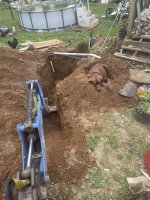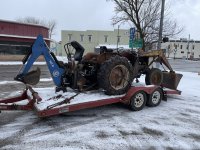OP
etpm
Veteran Member
- Joined
- Jun 30, 2021
- Messages
- 2,326
- Location
- Whidbey Island, WA
- Tractor
- Yanmar YM2310, Honda H5013, Case 580 CK, Ford 9N
Yeah, I have moved my machine with the bucket and the hoe. It's kinda weird to have the tractor suspended by both the bucket and the hoe at the same time.Your neighbor likely had a 3 pth model, which does put a lot of strain on the rear housing. A subframe is bolted to the bottom and distributes the weight to different points on the tractor.
It's a much lighter weight machine and you would be stressing it beyond the limits. I know what you are talking about with your Case and have seen it before. I've even seen guys load it onto a trailer using the bucket and hoe.
I don't understand why I would be stressing my lighter machine if the hoe is affixed to a proper sub frame. Am I missing something?
Thanks,
Eric



